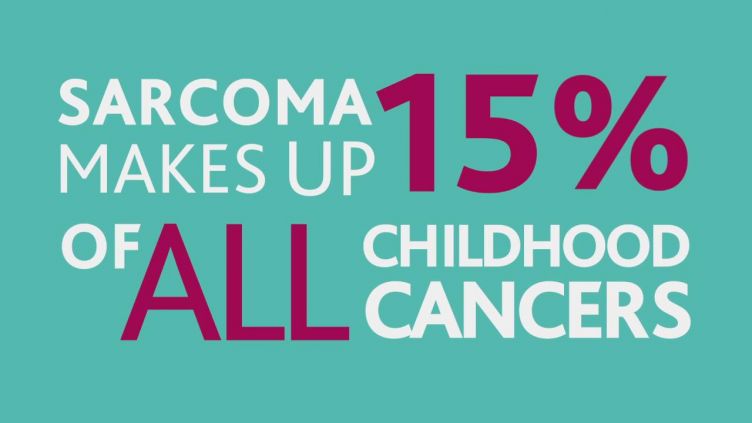Sheffield Sarcoma Research Group
Sarcomas are rare cancer that arises from mesenchymal tissue such as bone or connective tissue.
While bone sarcoma predominate in teenagers and young, the incidence of soft-tissue sarcomas starts to increase from middle age (respectively 0.7–1% and 4–8% of all adult and pediatric malignant tumours) occur in almost any anatomic site. More than 50 histological subtypes were described in the classification of WHO updated in 2013 [WHO Classification, Tumours of Soft Tissue and Bone – IARC 2013] and further recent refinements have been made identifying distinct molecular subtypes. The overall crude and world age-standardised incidence rates are respectively 6.2 and 4.8 per 100,000/year. Even these tumours may be very rarely hereditary, the cause of the disease is unknown. Their etiology is based on the “seed and soil” theory leading to the concept of “ tumour niche” which is a specialised microenvironment promoting the emergence of tumour stem cells and providing all the required factor for their development”.
Soft-tissue sarcomas affect preferentially middle-aged and elderly groups even if any age group can be affected. These rare tumours include a high number of heteregenous histological entities. Among the different subtypes, the commonest are liposarcoma, leiomyosarcoma, synovial sarcoma or gastrointestinal stromal tumours. Patients suffering from soft-tissue sarcomas are usually treated with surgery combined or not with radiotherapy and/or chemotherapy.
Bone sarcomas are very rare tumour entities and include wide variety of tumours originating from bone cells or their precursors. These tumours are called primary bone tumours. The commonest entities of primary bone tumours are osteosarcoma, Ewing sarcoma and chondrosarcoma. Osteosarcomas represent half of these sarcomas and affect young patients with a first peak of incidence occurring around 50 years of age (4.8 new cases per year per million children under 20 years of age). Ewing sarcoma is the second malignant primary bone tumours in children with a peak incidence around 15 years of age (2.9 new cases per year per million children under 15 years of age). Conventional treatment of osteosarcoma and Ewing sarcoma combine surgery and long courses of chemotheropapy. Chondrosarcomas are mainly diagnosed in the third to the sixth decade (1.8 new cases per million people per year) and the therapy is based essentially on surgical approaches.
The Sheffield Sarcoma Research Group associated basic researchers and clinicians (nurse, patient associations, etc) joined to better understand the pathogenesis of soft-tissue and bone sarcomas, to identify new prognostic markers and to develop new therapeutic approaches. Our objective is to provide the highest quality of care to patients with sarcoma and the most recent treatments available.
Group members - University
- Nicola Brown
- Andrew Chantry
- Will English
- Alison Gartland
- Dave Hammond
- Dominique Heymann
- Marie-Francoise Heymann
- Aymen Idris
- Chryso Kanthou
- Ishtiaq Rehman
- Azeez Salawu
- Karen Sisley
- Carolyn Staton
- Gill Tozer
- Penella Woll
- Robin Young
Group members - NHS
- Ahmed Al-Mukhtar
- David Dujon
- Maxine Eades
- Malee Fernando
- Victoria Giblin
- Matthew Hatton
- David Hughes
- Christine Ingram
- Nikhil Kotnis
- Andrew Morritt
- Gillian Quarrell
- Martin Robinson
We would like to thank all our funders for supporting our research: Bone Cancer Research Trust, Supporting Sarcoma, Inserm, Instituts thematiques and Rosetrees Trust.
Contact us
Professor Dominique Heymann
Email: dominique.heymann@sheffield.ac.uk
- Tel: +44 (0)114 215 9010
- Sec: +44 (0)114 215 9048

